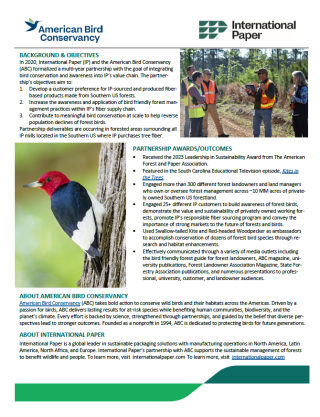NFWF and International Paper support longleaf pine restoration
We tend to assume that forests are self-sustaining natural habitats, with the ability to take care of themselves and deal with threats. For the most part this is true, but the human impact on wildlife and natural environments is undeniable, especially in parts of the world that have seem rapid development. Sometimes human intervention can help to protect endangered plant and animal species that face habitat loss due to human activity.
One of the ways International Paper assists with conserving the unique ecosystems in the United States is by partnering with the National Fish and Wildlife Foundation through our Forestland Stewards partnership. Since our incorporation of 17 paper mills in New York state in 1898, International Paper’s operations have been inextricable from the health of our forests. By lending our technological resources and financial support, we strive to promote an economy that is regenerative and “circular”, prioritizing renewable resources and enabling healthy and abundant forests.
For example, the Forestlands Stewards partnership has assisted North Carolina longleaf scientists to increase longleaf acreage, hire controlled burn crews and tackle invasive species. The uniqueness of the longleaf pine is in its name—it has the longest leaves of pine species, although they do resemble needles. The tree is recognizable for its tall stature and flaky, reddish bark. Longleaf pines were once common in “pine barrens,” unique and striking forests that used to be a common site in the southeastern United States, where vast forests of widely spread trees with grass growing in the space between were home to great biodiversity. Because of their accessibility and qualities as hardwood, old growth longleaf pine barrens were mostly eradicated by colonial settlers over 500 years ago. Current protected longleaf pines are highly resistant to wildfires, so controlled burns assist with regeneration by clearing dead plant matter from the undergrowth, so that new seeds can germinate.
In Texas, support from Forestlands Stewards has assisted the Texas Longleaf Team to establish more than 4,700 acres of longleaf. More than 2.8 million trees were planted and an additional 37,000 acres of existing longleaf were improved and maintained with prescribed fire and other management treatments. Prescribed burn certification workshops show landowners how fire is an essential forest management tool. NFWF and IP have invested more than $2.7 million in longleaf pine restoration and management in east Texas since 2013.


